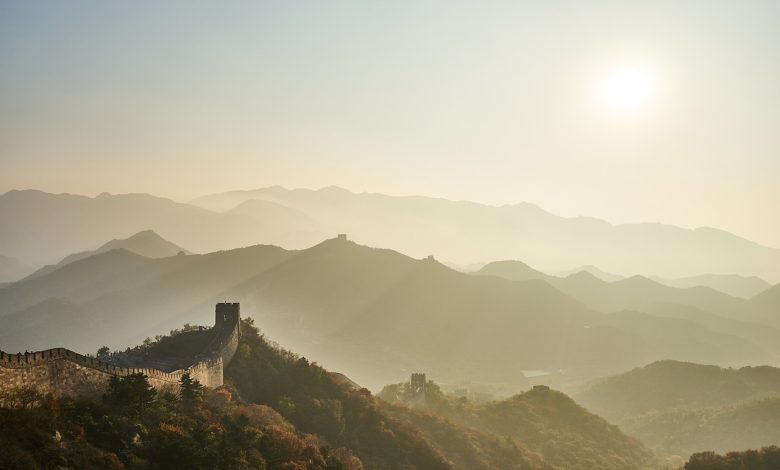Top Historical Sites in the World

If you’re looking for a place to travel that will change your life and give you an intense sense of awe, then these are the top historic sites in the world. From man-made wonders to natural phenomenon, here’s our list of must-see places from around the globe that have inspired wonder for centuries:
The Great Wall of China
The Great Wall of China is the world’s longest man-made structure, stretching about 5,500 miles from Shanhaiguan in eastern China to Lop Nur in the westernmost part of Xinjiang Uygur Autonomous Region. It was built over many centuries as a defensive fortification to protect the northern borders of the Chinese Empire from raids by nomadic groups such as Xiongnu and Mongolian tribes.
The wall was first constructed during the Qin Dynasty (221-206 BC) when Emperor Qin Shi Huang ordered his subjects to build a series of fortifications along its border with rival states like Han and Zhao so that they could not invade any longer. In subsequent dynasties such as Ming Dynasty (1368 – 1644), these walls were extended further southwards into Hunan Province until they reached today’s Anhui Province where they could no longer be defended properly due to lack of manpower but still maintain their symbolic value as symbols against foreign invasions until modern times when many sections have been destroyed through natural erosion or damaged deliberately so people couldn’t use them anymore
Machu Picchu
Machu Picchu, Peru
If you’re looking for a place to get away from it all and immerse yourself in history, Machu Picchu is a great choice. The ruins were discovered by Hiram Bingham in 1911 and were built during the 15th century by the Inca civilization. It’s located on an isolated mountain top with breathtaking views of surrounding mountains and valleys.
Stonehenge
Stonehenge is a prehistoric monument in Wiltshire, England. It’s one of the most famous sites in the world, and it was built by Neolithic people between 3000 BC and 2000 BC.
Stonehenge is made up of large standing stones arranged in a circle with entrances at the north east and south west (where there are also burial mounds). The stones vary from 3 metres to over 5 metres high; those at the north eastern entrance weigh about 20 tons each!
The purpose of Stonehenge has been debated for centuries but it’s generally believed that it was used as an astronomical observatory or calendar because its alignment with certain stars changes over time as they move across our sky – this means that during certain times of year these stars will rise through openings within some of its rings creating shadows which fall onto other stones inside them which may have represented different months on their calendars!
Chichen Itza
Chichen Itza is a Pre-Columbian archaeological site built by the Maya civilization located in the Mexican state of Yucatán. Chichen Itza was one of the largest cities in Mesoamerica during its prime, with an urban population of 20,000 people and over 100,000 people total within its urban area. The city was home to an extensive water management system which included over 50 reservoirs. These reservoirs were important for agriculture and trade with other cities.
Easter Island (Rapa Nui)
Easter Island is a Polynesian island in the southeastern Pacific Ocean. It’s famous for its 887 extant monumental statues, called moai, created by the early Rapanui people; and for its distinctive jade and red stone figures.
The name “Easter Island” was given by European explorers who visited in 1722, as they found it on Easter Day (5 April). They called it “Isla de Pascua” (Island of Pascua/Easter). However, there are some reports that have been published regarding the existence of this island before Europeans arrived there. For example:
- The Dutch explorer Jacob Roggeveen visited in 1722;
- An English explorer Samuel Wallis visited in 1767;
Petra, Jordan
Petra is a historical and archaeological city in southern Jordan. It’s one of the oldest human settlements in the world, dating back to at least 5th century BC. The city was once an important trading hub for the Nabataeans, who built temples there as early as 300 BC.
Petra also has many tombs carved into its sandstone cliffs that date from this time period. Today, Petra is Jordan’s top tourist attraction and one of the most famous sites in all of Arabia–so much so that it was named one of New7Wonders Cities!
Colosseum, Rome, Italy
The Colosseum is an elliptical amphitheatre in the centre of the city of Rome, Italy. It is considered one of the greatest works of Roman architecture and engineering.
Though it’s difficult to imagine now, the Colosseum was once home to some 50,000 spectators who gathered to watch public executions and gladiatorial battles (in which people fought each other). The Colosseum hosted these contests for nearly 500 years before they were banned by Pope Gregory XI in 1370 AD
Conclusion
There are many historical sites to visit in the world. The ones we’ve listed here are just some of the most famous and well-preserved ones. If you’re interested in learning more about other historical sites around the globe, check out our blog post on the topic!



